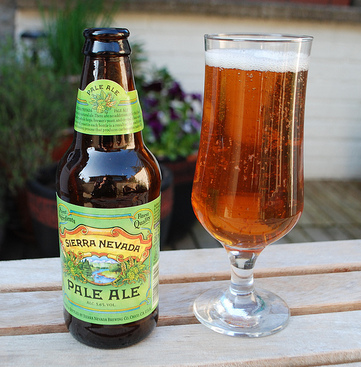Galveston Liquor: The Ultimate Destination for State Of Minds and White wines
Galveston Liquor: The Ultimate Destination for State Of Minds and White wines
Blog Article
Grasping the Craft of Distillation: a Deep Study Distillery Traditions
Checking out the elaborate art of purification reveals a world soaked in classic customs that have actually shaped the spirits we enjoy today. From the old origins of purification methods to the modern development of distillery equipment, each action in the procedure carries with it an abundant tapestry of history and expertise. As we look into the fragile balance of contemporary versus traditional distilling methods and uncover the relevance of key components, a deeper understanding emerges of the extensive impact distillery customs carry the spirits we relish.
Beginnings of Distillation Methods
The growth of distillation techniques has an abundant background that traces back to old civilizations. The origins of distillation can be connected to very early human beings such as the Mesopotamians, Egyptians, and Greeks. These old cultures used simple purification approaches for perfumery, medication, and generating alcohols. The concept of separating elements based on their various boiling factors laid the structure for the sophisticated distillation procedures we have today.
The earliest evidence of distillation go back to around 3000 BC in Mesopotamia, where clay pots were made use of to boil down fragrances and fragrant oils. The Egyptians additionally progressed these methods, using distillation for medicinal purposes and embalming practices. The Greeks, significantly figures like Aristotle and Hippocrates, added to the academic understanding of purification.
Gradually, distillation spread to areas like India, China, and the Center East, each culture adding its one-of-a-kind touch to the craft. The advancement of purification techniques proceeded via the Middle Ages and the Renaissance, eventually leading to the varied variety of distillation procedures utilized in modern distilleries worldwide.
Evolution of Distillery Tools
With developments in technology and a deeper understanding of the distillation procedure, modern-day distilleries currently use a variety of sophisticated devices to create spirits of the best quality. Today, purification devices includes column stills, reflux stills, and crossbreed stills, each created to accommodate specific purification requirements. These modern stills supply much better temperature law, boosted distillation accuracy, and higher efficiency in dividing alcohol from impurities.
Along with stills, distilleries currently use innovative condensers, fermenters, and filtering systems to more fine-tune the extract. The development of distillery equipment proceeds to play an essential duty fit the varied series of spirits available out there today.
Conventional Vs. Modern Distilling Practices
Alternatively, modern-day distilling techniques leverage cutting-edge technology and development to improve production processes and enhance consistency. Automated systems, computerized controls, and cutting edge equipment enable modern distilleries to produce spirits more efficiently and with greater accuracy.
While typical distilling techniques are valued for their heritage and the special tastes they create, modern have a peek here methods offer benefits in regards to scalability, quality assurance, and sustainability. By integrating scientific advancements and modern-day design, distillers can enhance production, reduce waste, and fulfill the needs of today's market better. Inevitably, the selection between conventional and modern distilling practices often relies news on the distillery's objectives, values, and target market.
Trick Components in Distillation Refine
Within the craft of distillation, the option of crucial components plays an essential duty in figuring out the flavor account and high quality of the spirits generated. The main ingredients utilized in the distillation procedure are usually water, yeast, and a fermentable source such as grains, fruits, or sugarcane.
Water is an essential component as it not just dilutes the alcohol web content to a palatable degree but likewise influences the total mouthfeel and structure of the spirit. The top quality and mineral content of the water made use of can considerably influence the end product.
Yeast is an additional vital active ingredient that converts the sugars existing in the fermentable resource into alcohol via the process of fermentation. Different stress of yeast can produce varying aromas and tastes, adding to the distinct features of the spirit.

Influence of Distillery Traditions on Spirits
The influence of historical distillery customs on spirits expands beyond the option of essential active ingredients, shaping the really essence and personality of the final distilled items (Galveston Whiskey). These practices, passed down through generations, play a vital duty in specifying the distinct preference profiles and high qualities that distinguish one spirit from one more
Distillery practices encompass a wide variety of methods, from the details techniques utilized in purification to the choice of maturing procedures employed. The usage of traditional copper pot stills in whiskey production is thought to present certain flavors and qualities that are extremely valued by aficionados. The aging of spirits in oak barrels, a practice deeply rooted in distilling traditions, contributes to the advancement of complicated scents and tastes over time.

Conclusion
To conclude, the traditions of distillation have an abundant background that has actually developed gradually. From the beginnings of purification techniques to the contemporary methods, the influence of distillery traditions on spirits is undeniable. By comprehending the crucial active ingredients in the distillation process and the evolution of distillery devices, one can value the workmanship and artistry that goes into producing high-grade spirits. Distillery practices play a vital role fit the spirits industry and preserving the heritage of distillation practices.
Throughout the history of distillation, the equipment made use of in distilleries has actually gone through considerable development to enhance efficiency and quality of the purification procedure.With improvements in innovation and a deeper understanding of the purification procedure, contemporary distilleries now make use of a selection of advanced equipment to generate spirits of the greatest high quality. Today, distillation tools includes column stills, reflux stills, and hybrid stills, each made to provide to particular purification requirements. From the origins of purification methods to the modern techniques, the effect of distillery traditions on spirits is obvious. Distillery customs play an important duty in shaping the spirits industry and protecting the heritage of distillation techniques.
Report this page